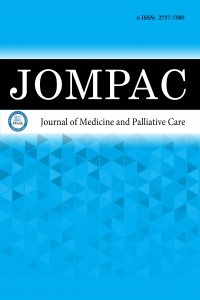1.
Nielsen JC, Johannessen A, Raatikainen P, et al. Radiofrequency ablation as initial therapy in paroxysmal atrial fibrillation. New Eng J Med. 2012;367(17):1587-1595. doi: 10.1056/nejmoa1113566
2.
Yoshida K, Yoshikawa J, Akasaka T, et al. Assessment of left-to-right atrial shunting after percutaneous mitral valvuloplasty by transesophageal color Doppler flow-mapping. Circulation. 1989;80(6):1521-1526.
3.
Packer DL, Kowal RC, Wheelan KR, et al. Cryoballoon ablation of pulmonary veins for paroxysmal atrial fibrillation: first results of the North American arctic front (STOP AF) pivotal trial. J Am Coll Cardiol. 2013;61(16):1713-1723. doi: 10.1016/j.jacc.2012.11.064
4.
Neumann T, Vogt J, Schumacher B, et al. Circumferential pulmonary vein isolation with the cryoballoon technique. Results from a prospective 3-center study. J Am Coll Cardiol. 2008;52(4):273-278. doi: 10.1016/j.jacc.2008.04.021
5.
Hausmann D, Daniel WG, Mugge A, Ziemer G, Pearlman AS. Value of transesophageal color doppler echocardiography for detection of different types of atrial septal defect in adults. J Am Soc Echocardiograp. 1992;5(5):481-488. doi: 10.1016/S0894-7317(14)80039-4
6.
Ishikura F, Nagata S, Yasuda S, Yamashita N, Miyatake K. Residual atrial septal perforation after percutaneous transvenous mitral commissurotomy with inoue balloon catheter. Am Heart J. 1990;120(4):873-878. doi: 10.1016/0002-8703(90)90203-A
7.
Watanabe T, Miyazaki S, Kajiyama T, et al. Persistence of an iatrogenic atrial septal defect after a second-generation cryoballoon ablation of atrial fibrillation. Heart Vessels. 2018;33(9):1060-1067. doi: 10.1007/s00380-018-1147-z
8.
Cronin EM, Collier P, Wazni OM, Griffin BP, Jaber WA, Saliba WI. Persistence of atrial septal defect after cryoballoon ablation of atrial fibrillation. J Am Coll Cardiol, 2013;62(16):1491-1492. doi: 10.1016/J.JACC.2013.07.017
9.
Fraker Jr TD, Harris PJ, Behar VS, Kisslo JA. Detection and exclusion of interatrial shunts by two-dimensional echocardiography and peripheral venous injection. Circulation. 1979;59(2):379-384. doi: 10.1161/01.CIR.59.2.379
10.
Soliman OI, Geleijnse ML, Meijboom FJ, et al. The use of contrast echocardiography for the detection of cardiac shunts. Eur J Echocardiograp. 2007;8(3):s2-s12. doi: 10.1016/j.euje.2007.03.006
11.
Fitchet A, Turkie W, Fitzpatrick AP. Transeptal approach to ablation of left-sided arrhythmias does not lead to persisting interatrial shunt: a transesophageal echocardiographic study. Pacing Clin Electrophysiol. 1998;21(11):2070-2072. doi: 10.1111/j.1540-8159.1998.tb01125.x
12.
Hammerstingl C, Lickfett L, Jeong KM, et al. Persistence of iatrogenic atrial septal defect after pulmonary vein isolation-an underestimated risk? Am Heart J. 2006;152(2):362.e1-362.e5. doi: 10.1016/j.ahj.2006.04.034
13.
Rillig A, Meyerfeldt U, Birkemeyer R, Treusch F, Kunze M, Jung W. Persistent iatrogenic atrial septal defect after pulmonary vein isolation. J Intervent Cardiac Electrophysiol. 2008;22(3):177-181. doi: 10.1007/s10840-008-9257-7
14.
Mugnai G, Sieira J, Ciconte G, et al., One year incidence of atrial septal defect after PV isolation: a comparison between conventional radiofrequency and cryoballoon ablation. Pacing Clin Electrophysiol. 2015;38(9):1049-1057. doi: 10.1111/pace.12663
15.
Yang Y, Wu J, Yao L, et al. The influence of iatrogenic atrial septal defect on the prognosis of patients with atrial fibrillation between cryoablation and radiofrequency ablation. Biosci Rep. 2020;40(2):BSR20193128. doi: 10.1042/BSR20193128
16.
Schueler R, Öztürk C, Wedekind JA, et al. Persistence of iatrogenic atrial septal defect after interventional mitral valve repair with the mitraclip system: a note of caution. JACC Cardiovasc Interv. 2015;8(3):450-459. doi: 10.1016/J.JCIN.2014.10.024
17.
Singh SM, Douglas PS, Reddy VY. The incidence and long-term clinical outcome of iatrogenic atrial septal defects secondary to transseptal catheterization with a 12F transseptal sheath. Circ Arrhythm Electrophysiol. 2011;4(2):166-171. doi: 10.1161/CIRCEP.110.959015
18.
Rillig A, Meyerfeldt U, Kunze M, et al. Persistent iatrogenic atrial septal defect after a single-puncture, double-transseptal approach for pulmonary vein isolation using a remote robotic navigation system: results from a prospective study. Europace. 2010;12(3):331-336. doi: 10.1093/europace/eup428
19.
Chan NY, Choy CC, Lau CL, et al. Persistent iatrogenic atrial septal defect after pulmonary vein isolation by cryoballoon: an under-recognized complication. Europace. 2011;13(10):1406-1410. doi: 10.1093/europace/eur138
20.
Sieira J, Chierchia GB, Di Giovanni G, et al. One year incidence of iatrogenic atrial septal defect after cryoballoon ablation for atrial fibrillation. J Cardiovasc Electrophysiol. 2014;25(1):11-15. doi: 10.1111/jce.12279
21.
Chan NY, Choy CC, Yuen HC, Chow HF, Fong HF. A very long-term longitudinal study on the evolution and clinical outcomes of persistent iatrogenic atrial septal defect after cryoballoon ablation. Canadian J Cardiol. 2019;35(4):396-404. doi: 10.1016/j.cjca.2018.12.028
22.
Davies A, Gunaruwan P, Collins N, Barlow M, Jackson N, Leitch J. Persistent iatrogenic atrial septal defects after pulmonary vein isolation: long-term follow-up with contrast transesophageal echocardiography. J Intervent Cardiac Electrophysiol. 2017; 48(1):99-103. doi: 10.1007/s10840-016-0193-7
23.
Linhart M, Werner JT, Stöckigt F, et al., High rate of persistent iatrogenic atrial septal defect after single transseptal puncture for cryoballoon pulmonary vein isolation. J Intervent Cardiac Electrophysiol. 2018;52(2):141-148. doi: 10.1007/s10840-018-0352-0
24.
Deshmukh A, Patel NJ, Pant S, et al., In-hospital complications associated with catheter ablation of atrial fibrillation in the United States between 2000 and 2010: analysis of 93 801 procedures. Circulation. 2013;128(19):2104-2112. doi: 10.1161/CIRCULATIONAHA.113.003862
25.
Wu LA, Malouf JF, Dearani JA, et al. Patent foramen ovale in cryptogenic stroke. Arch Intern Med. 2004;164(9):950. doi: 10.1001/archinte.164.9.950
26.
Baumgartner H, Bonhoeffer P, De Groot NMS, et al. ESC guidelines for the management of grown-up congenital heart disease (new version 2010). Eur Heart J. 2010;31(23):2915-2957. doi: 10.1093/eurheartj/ehq249
27.
Herrera Siklódy C, Deneke T, Hocini M, et al. Incidence of asymptomatic intracranial embolic events after pulmonary vein isolation: comparison of different atrial fibrillation ablation technologies in a multicenter study. J Am Coll Cardiol. 2011;58(7):681-688. doi: 10.1016/J.JACC.2011.04.010

